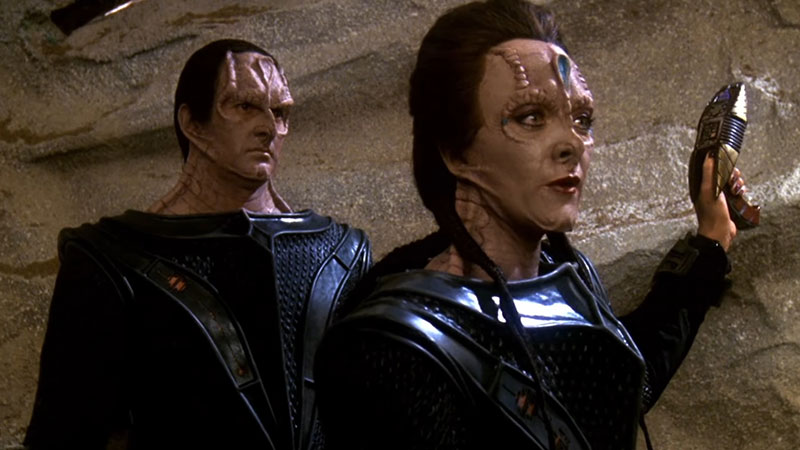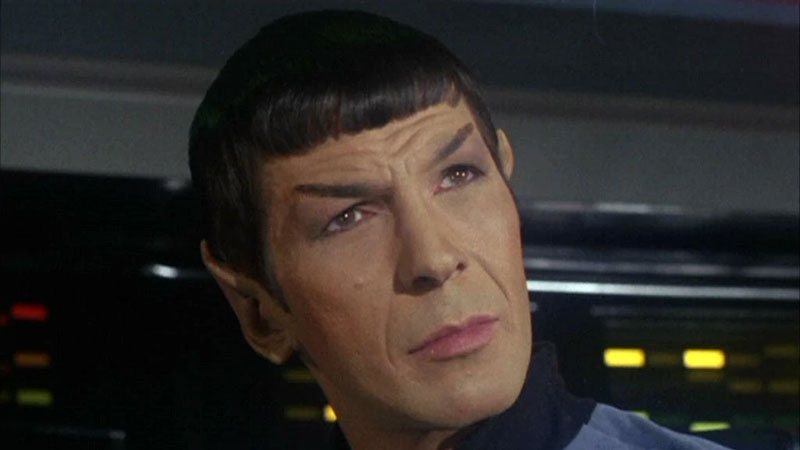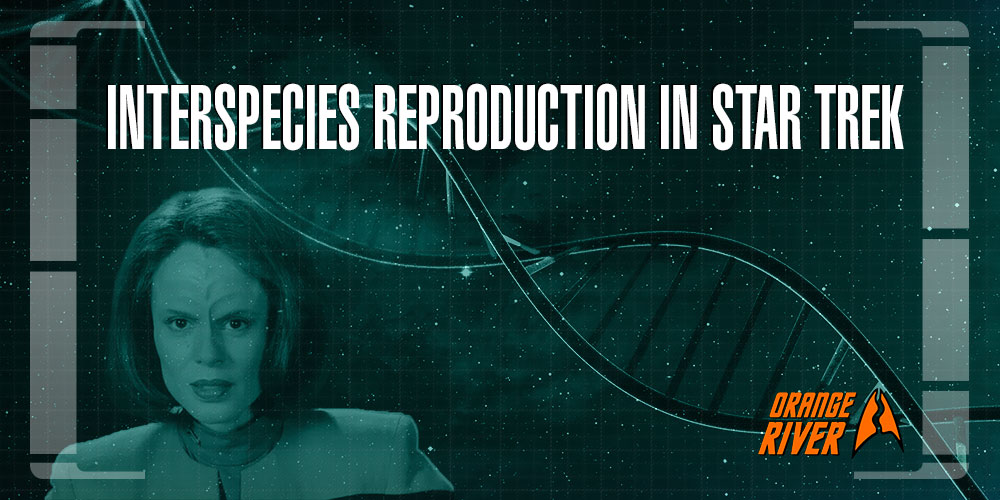Hey guys, Tyler here. I’ve covered quite a few alien species on my channel, both from Star Trek and non-Star Trek franchises alike. I try to explore each species’ biology—how they differ from humans, what their evolutionary history might have been, and how they compare to our expectations about aliens in real life.
But while many of these species share certain biological characteristics, one question has remained constant across all depictions: how are so many of them able to interbreed? As audience members, we often take that for granted, but realistically, interspecies reproduction should be far more complicated.
Franchises like Mass Effect generally do a better job at this, explaining how differences in amino acids make everything from interspecies sex to even sharing meals incredibly risky. But in Star Trek in particular, how does interspecies reproduction really work? How do doctors bridge the gap between what’s possible with and without medical intervention? And is it more plausible than we might think? Let’s find out.

Background
Most if not all of the humanoid species in the Milky Way Galaxy share a common ancestry. In The Next Generation episode “The Chase,” it is revealed that 4.5 billion years ago, a race called the Progenitors seeded the primordial oceans of many Earthlike worlds throughout the galaxy with a genetic code that would direct the evolution of life towards a form similar to their own.
This is why humans, Klingons, Romulans, Cardassians, and others all share more or less the same basic body plan. Even before TNG, The Original Series explained the abundance of humanoid aliens through parallel or convergent evolution.
TOS and the prequel series Enterprise gave the concept of convergent evolution on alien worlds the more sci-fi sounding name Hodgkin’s Law of Parallel Planetary Development Even as life forms evolved on planets separated by dozens, hundreds, or even thousands of light-years, their DNA was found to be strikingly similar, pointing towards the possibility of a shared origin.
This is a bit of an oversimplification, but the point is, in Star Trek, astrobiologists confirmed time and time again after first contact with certain alien species that there were numerous shared traits across planets and cultures, and eventually, it was confirmed that these parallel ecosystems got a bit of a jumpstart from the same source.
Even the revelation of potential parallel evolution in the 21st century would quickly lead many to examine the compatibility of human and alien DNA. And by the 23rd century, we see examples of living adult human-alien hybrids such as Spock. But before we go any further, it’s prudent to ask the question: what exactly is it that modern-day, real-world astrobiologists have to say about interspecies reproduction?
Well, just as in numerous other theoretical scientific fields, the experts are divided. Some astrobiologists believe that extraterrestrials will look more like insects or, even better, robots since primates are merely just one order from which intelligence could arise. Interspecies relations would thus be a hard sell—unless, of course, you’re into that kind of thing.
Given the evolutionary hurdles that life had to jump through to give rise to humans, many astrobiologists believe that the majority of alien life would look nothing like us—not even like other life forms on Earth. Different environmental pressures would arguably lead to different body plans, such as a centaur-like stature or major sensory organs being near the feet instead of a head-on top.
Indeed, the completely bizarre life forms that evolved here on Earth during the Cambrian explosion approximately 541 million years ago include animals with five eyes, backwards-facing mouths on their underside, and a clawed proboscis extending from the front of their face. Cambrian predators were, in many ways, more alien than modern-day arthropods.
However, some astrobiologists believe the humanoid form may be more likely to occur in intelligent species than we would otherwise expect. And that makes some sense, right? While our bodies are not “perfect” in an evolutionary sense, since there’s no such thing, some traits may emerge as being optimal across various planets.
These include bipedalism, freeing up a set of limbs for toolmaking; forward-facing eyes and other sensory organs on ahead atop our torso, optimal for predation; and, perhaps, other traits such as verbal communication, emotional intelligence, and a sense of cooperation forming the basis of a civilized society.
And because sexual reproduction is expected to arise independently in other environments, aliens would at the very least have sexual attraction among themselves. Of course, as is made clear in Star Trek VI: The Undiscovered Country, “not all species keep their genitals in the same place.”
Regardless of the frequency of humanoid aliens in real life, in Star Trek, it’s clear that there are thousands of humanoid alien civilizations. So…what does this tell us? Well, while all the basics may be there in terms of body shape, what’s on the inside could be so different that it’s still a dealbreaker.
As I alluded to earlier, in Mass Effect, some species’ biology is based on dextro-amino acids rather than the more dominant Levo-amino acids, meaning that the sharing of things like food and, well, bodily fluids can be fatal. In Star Trek, though, most humanoid life seems to share the same basic protein structures, at least as far as we’re aware. But how do they overcome the other differences between species in order to reproduce?

Getting Down to Business
Despite so many shared biological traits—carbon-based molecular makeup, a shared body plan, etc.—interspecies reproduction in Star Trek is still not really “simple.” Because of the complications that can arise from interspecies breeding, it is a deeply researched topic.
There’s even a semester-long course at Starfleet Academy about interspecies protocol with a heavy emphasis on personal relationships and on reproduction. Even sexual encounters between seemingly compatible species such as humans and Bolians aren’t as straightforward as they might seem.
Human-alien hybrid embryos are far from guaranteed to survive to term due to prospective genetic defects or dangers to the mother before or during birth. And again, this isn’t entirely surprising…so how do they fix it?
For species that cannot reproduce naturally for one reason or another, genetic engineering technology can be used to ameliorate most issues. In fact, this may be the case with the vast majority of interspecies breeding in Star Trek.
Now, you might be saying, “isn’t genetic engineering banned in the Federation?” Well, it is, but it’s always been understood that this ban refers primarily to genetic “enhancements” and straight-up eugenics—such as the augmenting of certain individuals to express some “superior” characteristics.
While Earth had its Eugenics Wars in the late 20th and early-to-mid 21st centuries, other species such as the Denobulans perfected genetic engineering by the 22nd century without having to endure a genocidal conflict on their planet.
In the Enterprise two-parter “Demons” and “Terra Prime,” we learn that a xenophobic Earth-based terrorist organization has stolen DNA samples from “Florida Man” Trip Tucker and Vulcan science officer T’Pol to create a binary clone.
The infant ultimately dies due to genetic complications, but according to Phlox, the method used to combine the DNA was flawed, and with extra careful attention to the cloning process, there is no fundamental reason why humans and Vulcans could not have a child. And as I mentioned earlier, we see this borne out in the 23rd century with Spock.
By the 24th century, we see hybrid offspring of several species, including humans and Ktarians, Cardassians and Kazon, Cardassians and Bajorans, Klingons and Trill, Klingons and Romulans, Klingons and humans…man, Klingons are pretty damn popular as mates.
Must be the two…um…well…you know. But despite their evolution in completely separate biospheres, these species shared genetic ancestry is arguably the primary reason they can mate in the first place.
They must share similar numbers of chromosomes, similar enzymes, and other basic ingredients to make a successful pregnancy—whether the gestation lasts 9 months or a different amount of time.
And genetic engineering helping to reduce some of the complications between otherwise incompatible elements of alien biology is a key piece of the puzzle as well. This could also explain why so many of these hybrids are not infertile.
In Earth biology, interspecies reproduction almost always leads to offspring who cannot reproduce themselves, but advanced genetic engineering could assist in addressing that problem as well.

Prevalence of Hybrids
But this brings me to another question: even if we establish that interspecies reproduction is possible and can point out numerous examples of it, why are many of these examples so frequent among the bridge crews of prominent Starfleet ships?
The reason I ask is that, while galactic commerce and diplomacy would obviously be factors that encourage intermarriage between members of alien cultures, it seems like more than a coincidence that almost every Star Trek show has at least one hybrid character, right?
The Original Series has Spock, a human-Vulcan hybrid, The Next Generation has Deanna Troi, a human-Betazoid hybrid, and Voyager has B’Elanna Torres, a human-Klingon hybrid, and Naomi Wildman, a human-Ktarian hybrid. Seven of Nine is basically a human-Borg hybrid, depending on your semantic preferences.
Technically, Benjamin Sisko in Deep Space Nine is half-human, half-Prophet. A deleted scene from Star Trek II: The Wrath of Khan even reveals that Lieutenant Saavik is in fact half-Vulcan, half-Romulan—though those two species’ common ancestor is only a few millennia old. Notably, though, every show since Enterprise seems not to feature a hybrid main character in its bridge crew, though that said, Michael Burnham did spend her formative years being brought up on Vulcan.
Why are there so many hybrids? Well, in-universe, it could be because of the nature of Starfleet itself. Despite being the Federation’s primary exploration organization, Starfleet is still rather human-dominated.
Starfleet Academy’s main campus—and the Federation Council and Office of the President for that matter—are located on Earth. Most Starfleet captains we meet are human. Most admirals we meet are human (and idiots at that). Lots of Starfleet ships are built in the Sol system.
Starfleet being an outgrowth of Earth’s military is one of the biggest open secrets of the franchise, in my opinion. So, it stands to reason that at least some alien Starfleet officers with one human parent would make it onto the command staff, and there may be more in junior positions.
Out-of-universe, it makes for interesting internal conflict as these hybrid characters try to navigate the difficulties of balancing their two halves. In the universe, it seems to be a statistical inevitability.
If you want to support my work even further, becoming a patron at patreon.com/orangeriver is a great way to do so.
Watch The Latest Video By Orange River Media Below
So, who’s your favourite hybrid character? And…could you see yourself pursuing a relationship with a member of an alien species? Be honest. Let me know down in the comments.
Thank you all so much for watching, if you enjoyed this video, be sure to leave a thumbs up down below and don’t forget to share it. That stuff really helps me out. If you haven’t subscribed, be sure to do that as well and click the bell icon to receive all notifications.
You can find Orange River Media at the links below
- YouTube: https://www.youtube.com/orangeriver
- Twitter: https://www.twitter.com/orangerivernw
- Instagram: https://www.instagram.com/orangeriver.nw
- Facebook: https://www.facebook.com/orangerivernw
- Patreon: https://www.patreon.com/orangeriver












